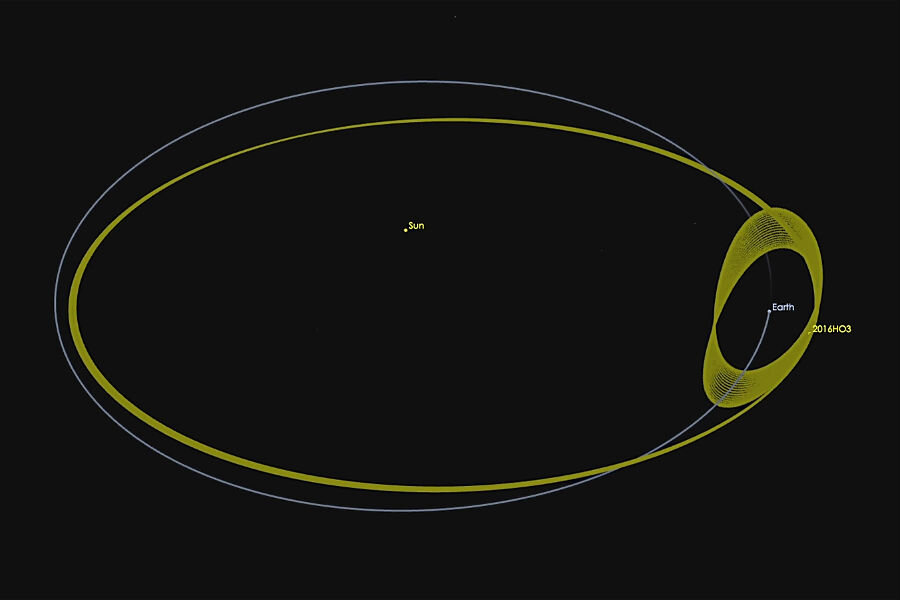Astronomers spot asteroid in 'little dance with Earth'
Loading...
Scientists have discovered a new asteroid that, thanks to its unique trajectory, is set to be Earth’s companion for centuries to come.
The University of Hawaii Institute for Astronomy’s Pan-STARRS 1 survey, which scans the skies nightly to track the solar system’s asteroids, discovered the Apollo-group asteroid designated 2016 HO3 this April. The small object is the latest quasi-satellite of Earth to be found; both bodies are locked in similar orbits around the Sun that will last for generations.
“The asteroid’s loops around Earth drift a little ahead or behind from year to year, but when they drift too far forward or backward, Earth’s gravity is just strong enough to reverse the drift and hold onto the asteroid so that it never wanders farther away than about 100 times the distance of the moon,” explained Paul Chodas, manager of the National Aeronautics and Space Administration (NASA) Jet Propulsion Laboratory’s Near-Earth Object (NEO) Program, in a NASA release.
“The same effect also prevents the asteroid from approaching much closer than about 38 times the distance of the moon,” he said. “In effect, this small asteroid is caught in a little dance with Earth.”
The discovery of 2016 HO3 is not the first of such object, but is by far the most secure near-Earth companion yet noted by scientists. Another solar-orbiting asteroid, 2003 YN107, was discovered in a similar co-orbital pattern with Earth more than a decade ago, but has since shifted to a more detached horseshoe orbit around our planet.
2016 HO3 is known as a quasi-satellite, because it "loops around our planet, but never ventures very far away as we both go around the sun,” Dr. Chodas said, according to NASA, adding that the new asteroid “is much more locked onto us” than previous asteroids have been.
“It’s kind of an interesting interplay of effects from the sun and the Earth,” he stated in a telephone interview with The Christian Science Monitor.
The Hawaiian Pan-STARRS survey picks up a handful of NEOs daily and around 2,000 per year, according to Chodas, but did not come across 2016 HO3 until this spring, despite the asteroid having shared an orbit with the Earth for around a century, according to calculations. And while no details are confirmed regarding its composition or origin, its cosmic path alone is enough to make it a unique object of interest for astronomers.
“This is pretty rare because it’s in an orbit that’s essentially the same as the Earth,” Chodas told the Monitor. While designated a terrestrial quasi-satellite, 2016 HO3’s location can range from approximately 9 to 23 million miles from Earth and it remains locked in orbit around the sun.
2016 HO3 is estimated to be 120 to 300 feet in diameter, and is not expected to come in contact with the Earth during its time as a co-orbital companion. After its hundreds of years, though, it will drift into a horseshoe pattern around the sun similar to 2003 YN107.
Chodas also told the Monitor that, while NASA has yet to consider it, 2016 HO3’s uncommon positioning could make it an attainable target for future study as interest in asteroid investigation grows – although the possibility of such a move is slim as of now.
“It’s a potential mission target,” he said. “We could actually send a mission to this asteroid and investigate it fairly easily.”








